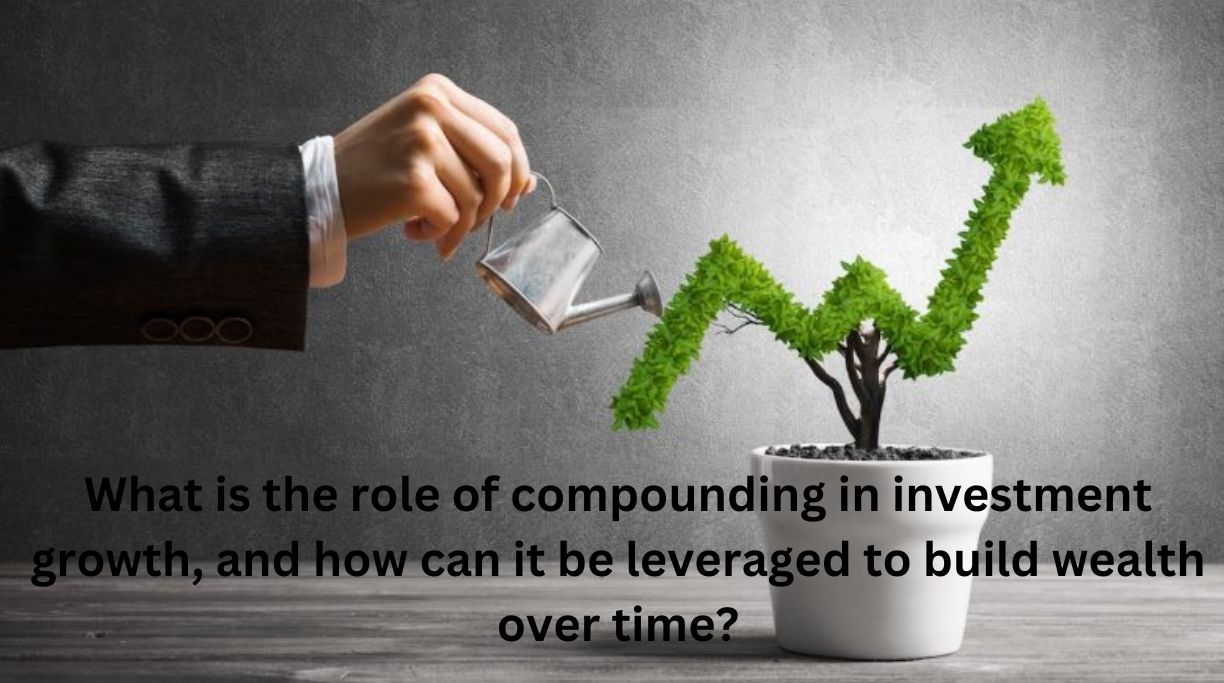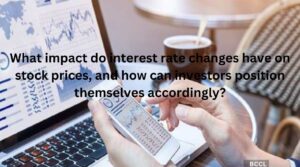Investing can be a complex journey, filled with various strategies and approaches. One key element that stands out in the world of finance is the concept of compounding. This article delves into the role of compounding in investment growth and explores how individuals can leverage it to build wealth over time.
What Is The Basics of Compounding?
Comprehending the Idea
Compounding is essentially the process through which an investment grows based on the interest accrued over time as well as the original principal amount. To put it another way, imagine it as a financial snowball that is rolling downward and gaining momentum. It gets bigger the longer it rolls. Assume you make a $1,000 investment with an annual interest rate of 5%. You would receive $50 in interest during the first year, for a total of $1,050. This 5% is applied to both your initial $1,000 and the $50 interest from the first year in the second year, making $52.50 in interest. As time passes, this compounding effect gets stronger and stronger, leading to exponential growth.
Formula for Compound Interest
The formula for compound interest further elucidates the mechanics of this process:
A=P×(1+n/r)^nt
- A represents the future value of the investment/loan, including interest.
- P is the principal amount (initial investment).
- r is the annual interest rate (in decimal form).
- n is the number of times that interest is compounded per unit t.
- t stands for the time the money is invested or borrowed for, in years.
This formula allows investors to calculate the future value of an investment with precision, considering different compounding frequencies.
Comparing Simple and Compound Interest
Understanding the differences between compound interest and its more basic form, simple interest, is essential. Calculations of simple interest are limited to the initial principal amount. In our previous example, no matter how many years went by, if simple interest were applied, you would earn $50 annually on the original $1,000. Conversely, compound interest accounts for interest accrued over earlier periods. This important distinction indicates that the effect of compounding gets bigger over time. It’s the distinction between exponential and linear growth, and any investor hoping to optimize returns must grasp this difference.
Read Also:
- What are the best practices for setting and tracking financial goals to ensure success?
- How can individuals prioritize saving for both short-term goals and long-term retirement?
- How does inflation impact financial planning, and what measures can be taken to mitigate its effects?
- What are the benefits and drawbacks of different retirement account types, such as 401(k)s and IRAs?
- What strategies can be employed to pay off high-interest debts efficiently?
How Compounding Works in Different Investments?
Equities
Capital Appreciation: Gains from a stock’s increasing value over time add to the compounding effect. Let’s say you put $1,000 into a stock that has a 7% yearly growth rate. Your initial investment is now worth $1,070. Growth is accelerated in the second year because the 7% growth applies to both your initial $1,000 and the $70 you made the previous year. Payouts: A portion of a company’s profits that are given to shareholders as dividends are another feature of many stocks. The compounding effect is further enhanced by reinvesting these dividends. If you reinvest $50 of your $50 dividend, for example, the next year’s 7% growth applies to a larger base, increasing returns.
Real Property
- Property Appreciation: The compounding effect is at work when real estate values increase over time. If the value of your property rises by 5% a year, the growth that comes after the initial investment also adds to the increased value, resulting in a compounding snowball effect.
- Rental Income: An income stream from rental properties is steady. Compounding is aided by reinvesting rental income, which can be done through property improvements or portfolio expansion. Over time, the compounding effect becomes more significant the more income is reinvested.
Links
- Interest Payments: Bondholders receive periodic interest payments from bonds. Investors can take advantage of the compounding effect by reinvesting these interest payments as opposed to cashing them out. Exponential growth is promoted by the reinvested interest, which in turn generates more interest in later periods.
Investment Mutual Funds
- Mutual funds invest in a diverse portfolio of stocks, bonds, and other securities by pooling the capital of multiple investors. In mutual funds, compounding arises from the combination of capital growth and reinvested interest and dividends.
- Capital Appreciation: Shares of mutual funds have the potential to appreciate in value over time, much like individual stocks do. This contributes to the compounding effect. Compounding potential grows with the fund’s asset base.
- Reinvested Interest and Dividends: A lot of mutual funds pay out interest and dividends. Choosing to keep the compounding cycle going by choosing to reinvest these distributions instead of taking them as cash. The amounts that are reinvested yield more returns and promote long-term growth.
What are The Risks and Challenges of Compounding?
Variations in the Market
The vulnerability of compounding to changes in the market is one of its inherent risks. Global, political, and economic developments have an impact on the dynamic financial markets. Consequently, investments may see volatility in their value, which will affect the compounding process. The compounding effect may be hampered during market downturns as investment growth slows or even reverses. This is especially important for investments that are closely related to stock markets. Investors need to have a resilient mindset and understand that short-term fluctuations are a part of the bigger picture in order to manage this risk. Periodic portfolio reviews and possible modifications can also aid in adjusting investments to reflect shifting market conditions.
Deflation
The compounding process is silently threatened by inflation. The purchasing power of money decreases with rising living expenses. The real value of compounded returns may decrease if the rate of return on investments is not higher than the rate of inflation. Investors should look for investments with returns higher than the inflation rate in order to offset the effects of inflation. This is the point at which having a well-diversified portfolio is essential. By distributing risk among several asset classes, diversification may act as a buffer against inflation’s eroding effects on compound returns.
The Value of a Well-Selected Portfolio
Effective risk management in the investing world is based on diversification. The idea is straightforward: disperse your investments across a number of asset classes, sectors, and geographical areas rather than placing all of your eggs in one basket. By using this technique, the portfolio as a whole is less affected when a single investment performs poorly. A diversified portfolio protects against inflation and market volatility risks when compounding is involved. The risk-return profiles of various asset classes, including stocks, bonds, real estate, and commodities, differ. Some asset classes may outperform when one underperforms, creating a balance that aids in maintaining the compounding process.
Conclusion
In conclusion, the journey of compounding in investment growth is a dynamic and rewarding one, marked by the interplay of market forces, the challenge of inflation, and the resilience found in a diversified portfolio. While market fluctuations and inflation pose risks, the power of compounding, when harnessed strategically, can lead to sustained wealth accumulation. Diversification emerges as a key ally, providing a buffer against uncertainties. As investors navigate this landscape, understanding the risks, leveraging time, and embracing a diversified approach are essential for a successful compounding journey. Now, let’s address some common questions to further illuminate the path of compounding and its nuances.
FAQs
- How often should I review my investment portfolio to adapt to market fluctuations? Regular portfolio reviews, at least annually, are advisable. However, the frequency may vary based on individual financial goals and risk tolerance.
- Can compounding overcome the impact of inflation completely? While compounding can help mitigate the effects of inflation, it’s crucial to choose investments with returns that outpace inflation for sustained real growth.
- Is a diversified portfolio only relevant for experienced investors? No, diversification is fundamental for investors at all levels. It provides stability and risk management, making it a valuable strategy for both beginners and experienced investors.
- How does compounding play a role in retirement planning? Compounding is a potent tool for building a retirement nest egg. Starting early, making regular contributions, and maintaining a well-diversified portfolio are key elements in retirement planning.
- What are the emerging technologies in finance that can enhance compounding strategies? Fintech innovations, such as robo-advisors and online investment platforms, offer tools that can streamline investment processes, providing investors with greater control and accessibility.








